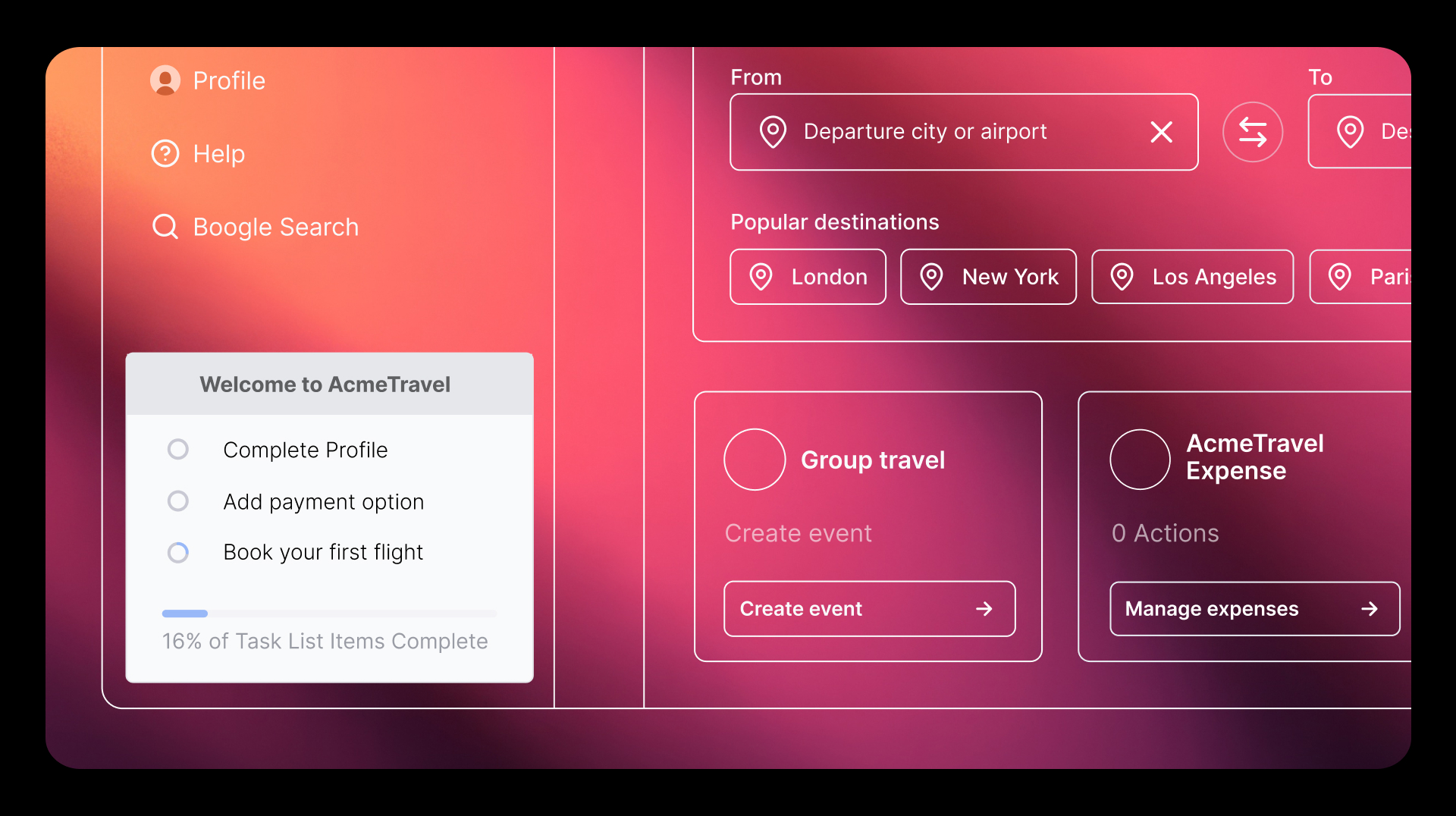In our current economic climate, business leaders are being forced to make difficult decisions about where they spend their time and money. Gone are the days of “growth at any cost.” Now, they must question every dollar and minute spent to ensure they’re maximizing their organization’s impact without incurring additional overhead or wasting precious resources.
Growth at any cost is out.
Efficient growth is in.
It’s more important than ever for companies to prioritize productivity, trim excess waste, keep the customers they already have, and make sure internal teams are focused on the right—ideally revenue-generating—things. In other words, they need to learn to operate more efficiently. The good news? The solution for many of the challenges that software companies are now facing is right under their noses: their products.
For “The inefficiency report,” we asked 100+ product and business technology leaders where they were experiencing inefficiency throughout their businesses, and how they sought solutions within their products. We wanted to understand not just where they saw opportunities to become more productive, but how they used their products to save costs, do more with less, and ready their companies to weather tough economic conditions—and bounce back stronger than ever once they pass.
How product experience and digital adoption solutions help drive efficiency
Our study surfaced 10 common areas of inefficiency. We took a closer look at how each of these inefficiencies manifest throughout the business, and detailed how product experience and digital adoption solutions help mitigate them. This report will help you turn your products into efficiency drivers so you can stretch your existing resources further and free your internal teams to focus on the work that truly moves the needle.
Read on for an overview of each inefficiency area (and how Pendo helps solve them)—then download the full report to go even deeper.
Inefficiency #1: Inability to handle the volume of support calls and tickets
Building in-app support and help or resource hubs inside your product allows you to proactively address common customer and employee questions—so you can eliminate much of the repetitive triage that typically falls on the shoulders of your support, IT, and customer-facing teams. Bringing support in-app also helps users self-serve the answers they’re looking for on their own time, resulting in a better product experience.
Inefficiency #2: Struggling to onboard new customers or employees at scale
In-app onboarding alleviates the pressure on enablement teams by guiding users through standard ramp-up activities, at scale. It also allows you to deliver a more personalized experience thanks to metadata-based segmentation, which ultimately improves long-term knowledge retention and adoption. Plus, this self-serve model allows users to get fully immersed in (and start experiencing the value of) the product much faster than they could if they had to wait for the next human-led onboarding cycle.
Inefficiency #3: Wasting time trying to decipher user needs and behaviors
Product analytics is non-negotiable for understanding user behaviors and product performance. Without it, product and IT teams are prone to making uninformed decisions and wasting huge amounts of time on manual, time-consuming discovery. By using your product as a vehicle for gathering behavioral insights—and communicating with users in-app to steer ideal behaviors—you can identify exactly how users are engaging with key areas of your product, adjust your strategy as needed, and drive adoption.
Inefficiency #4: High and unpredictable rates of customer or employee churn
Now more than ever, it’s critical to prioritize keeping the customers you already have. By using product data to identify the early warning signs of customer or employee churn (e.g. low usage, declining feature adoption, poor user sentiment, etc.), you can proactively intervene as needed and focus your time and resources on the activities that will help customers or employees get the most value possible from their product experience.
Inefficiency #5: Spinning your wheels on what to build next
By leveraging your product as a channel through which to collect both usage data and user feedback, you can go from guessing what to build next to knowing what efforts will actually make an impact. This reduces wasted development effort, helps product and IT teams prioritize their time, and focuses your roadmap and release plans. This juncture of quantitative and qualitative data is also extremely valuable for identifying products or features that should be sunset—ultimately freeing up teams for new, higher-value initiatives.
Inefficiency #6: Confusing your users with out-of-context communication
Particularly in a down-market, leveraging your product as a primary channel through which to communicate with customers and employees is a powerful way to cut through the noise and engage more directly—without relying on your engineering team or waiting for the next release to adjust your product UI or messaging. Communicating with users in-app ensures the messages you share are as top-of-mind as possible (and thus more likely to drive action). And it helps teams across the business deliver personalized outreach at scale.
Inefficiency #7: Relying too heavily on sales to drive growth and expansion
Allowing prospects to experience your product before talking to a seller (through self-guided tours, freemium plans, free trials, etc.) enables you to capture high-quality, product-qualified leads (PQLs). And by leveraging product analytics and in-app guides, you can automate upsell, cross-sell, or expansion motions based on usage or behavioral triggers—resulting in a more tailored and relevant user experience, and allowing your sellers and customer success teams to broaden their reach without extra overhead.
Inefficiency #8: Lacking a cohesive strategy around user feedback
By using your product or app as the primary vehicle through which you collect feedback, you can capture higher quality and more relevant input from users. This in-the-moment feedback solicitation also greatly increases the likelihood that users will actually share their thoughts, since they don’t need to navigate away from what they’re already doing. And with a platform like Pendo, you can even tie these qualitative inputs to quantitative usage insights to paint a full picture of the user experience.
Inefficiency #9: Inability to demonstrate value and drive adoption
Delivering enablement in-app allows you to ease the burden on your onboarding and learning and development (L&D) teams, reduces operational waste, and accelerates user proficiency—ultimately improving adoption and retention. Using product analytics to inform your adoption strategy also helps improve long-term usage by ensuring the entire learning experience is as relevant to each user cohort as possible, based on user metadata and the jobs they’re trying to get done.
Inefficiency #10: Reactive approach to migrating users to new tools or ways of working
Moving customers and employees to new platforms (or enabling them on new processes) often falls on the shoulders of change management or digital transformation leaders—but your product experience or digital adoption platform can help. Product analytics allows you to see, in real-time, how users are engaging with new tools or workflows, so you can adjust your onboarding or training strategy appropriately. You can also use in-app messages to communicate with users before, during, and after the change—and use in-app feedback to keep an ongoing pulse on how they’re feeling.
Download the full inefficiency report to dive deeper into each of these inefficiency areas, learn to spot the early warning signs of waste in your own business, and explore how Pendo can help you operate more efficiently today—and build a solid foundation to outlast whatever economic challenge comes next.


